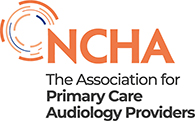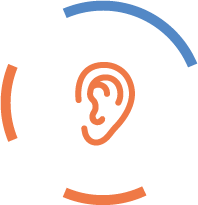Overview
This section provides policymakers and commissioners with resources to help meet ear and hearing care needs in Northern Ireland.
Learn more about:
- Hearing loss in your area
- Primary care audiology - accessible ear and hearing care for all
- Commissioning high quality, cost-effective and sustainable services
- Evidence
If you would like to access any additional support and guidance please email us at [email protected].
Today, more than 312,000 adults have a hearing loss in Northern Ireland. Use the hearing map below to get an overview of hearing needs in your region.
We are currently updating our hearing map of Northern Ireland, if you would like to be updated when this is published please email us at [email protected].
Primary care audiology - accessible ear and hearing care for all
We are committed to working with sector partners, HSC and the Department of Health to establish audiology as the fifth HSC primary care service in Northern Ireland.
Primary care audiology will benefit patients and the HSC.
Allowing HSC patients to self-refer to primary care audiology will also reduce pressure on GPs and hospital colleagues - a win for patients, GPs and hospitals.
Learn more about primary care audiology - accessible ear and hearing care for all.
Commissioning high quality, cost-effective and sustainable services
Hearing loss affects more than 312,000 people in Northern Ireland. It is a major and growing public health challenge and the 7th leading cause of years lived with disability in Northern Ireland [1].
In Northern Ireland 95% of people with hearing loss are aged 40 and over, this is because age-related hearing loss is the main cause of hearing loss [2].
Unsupported adult hearing loss has a major impact on an individual's ability to communicate, including with friends and family, and increases the risk of depression, loneliness and social isolation, cognitive decline, early exit from the workforce and reduced quality of life [3-7].
Hearing support has been shown to improve quality of life and reduce these risks [8]
People with hearing problems can access services directly from an audiologist if they have the ability to pay, or by first seeing their GP for a referral letter to see an audiologist when care is funded by the Health Service. There is currently no waiting list for those choosing to access local self-funded audiology services. You can access Health Service waiting list data below:
Things you can consider when planning local services:
- Hearing loss is a long-term condition. Do people have timely access to ongoing support and advice for their hearing problems?
- The average hearing aid user is aged 70 and over. Are services easily accessible and close to home?
- There is significant unmet hearing need in Northern Ireland. Is there a clear plan of action to tackle local unmet hearing needs as part of a healthy ageing or other public health initiative?
At the NCHA we can help you access the evidence and support you need to design hearing care locally, so that you meet needs in a sustainable way. If you would like more information and support please contact us at [email protected].
This section can be read alongside other resources on our website. You might also find the following resources helpful in that they provide independent evidence that:
- Hearing loss is a major and growing health challenge
- Early diagnosis and management of hearing loss is cost-effective
- Hearing aids are cost-effective
- Supporting people with tinnitus can improve health and wellbeing
Access:
- Hearing loss in adults: assessment and management (NICE)
- Hearing loss in adults: assessment and management - full guideline (NICE)
- Tinnitus: assessment and management (NICE)
Originally published: 2015
Reviewed: February 2024
Next review date: February 2025
Info: This guide was updated as part of a website upgrade in 2021. New resources and links added in 2024.
Reference and notes
[1] Vos, T et al (2015), Global, regional, and national incidence, prevalence, and years lived with disability for 301 acute and chronic diseases and injuries in 188 countries 1990-2013: a systematic analysis for the Global Burden of Disease Study 2013. The Lancet
[2] Sources: Prevalence (%) of hearing impairment (≥ 25 decibels) in NI, based on level of hearing loss in the better ear in each age group: Data Sources: Davis, A. 1989. The Prevalence of Hearing Impairment and reported Hearing Disability among Adults in Great Britain. International Journal of Epidemiology, 18(4), pp. 911-917; Davis, A. 1995. Hearing in Adults. London: Whurr, calculated for each group using local population
[3] Acar, B. et al. 2011. Effects of hearing aids on cognitive functions and depressive signs in elderly people. Archives of Gerontology and Geriatrics, 52(3), pp. 250-252.
[4] Hidalgo, J. L. et al. 2009. Functional status of elderly people with hearing loss. Archives of Gerontology and Geriatrics, 49(1), pp. 88-92
[5] Lin, F. R. et al. 2011. Hearing Loss and Incident Dementia. Archives of Neurology, 68(2), pp. 214-220
[6] Helvik, A. 2012. Hearing loss and risk of early retirement. The Hunt study. European Journal of Public Health, 23(4), pp. 617-622
[7] Appollonio, I. et al. 1996. Effects of Sensory Aids on the Quality of Life and Mortality of Elderly People: A Multivariate Analysis. Age and Aging, 25(2), pp. 89-96.
[8] Chisolm, T. et al. 2007. A Systematic Review of Health-Related Quality of Life and Hearing Aids: Final Report of the American Academy of Audiology Task Force on the Health-Related Quality of Life Benefits of Amplification in Adults. Journal of the American Audiology, 18(2), pp. 151-183; Davis, A. et al., 2007. Acceptability, benefit and costs of early screening for hearing disability: a study of potential screening tests and models. Health technology assessment, 11(42) pp. 75-78; Acar, B. et al. 2011. Effects of hearing aids on cognitive functions and depressive signs in elderly people. Archives of Gerontology and Geriatrics, 52(3), pp. 250-252.
 Your hearing and aural health
Your hearing and aural health  Commissioners and Policymakers
Commissioners and Policymakers  Member support and guidance
Member support and guidance News and views
News and views
 Hearing map
Hearing map
